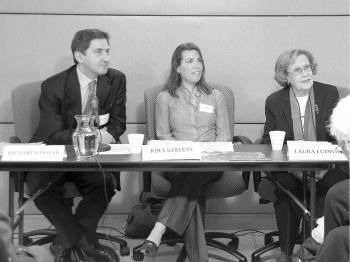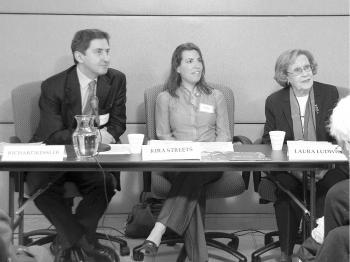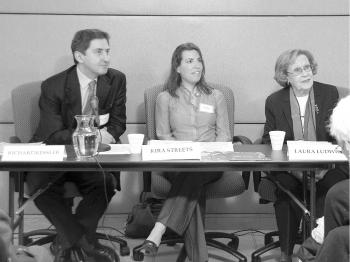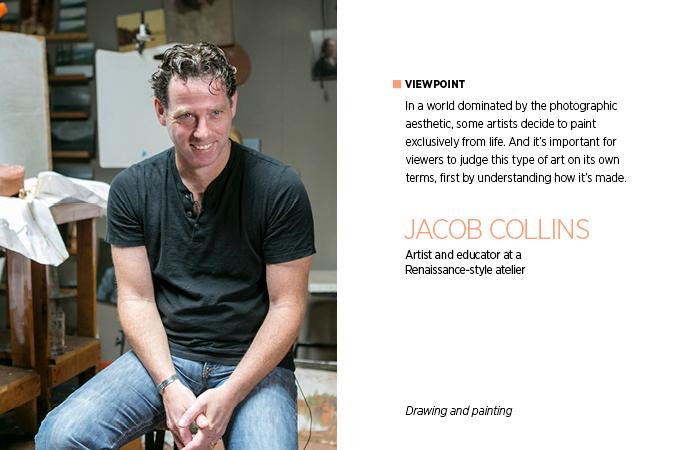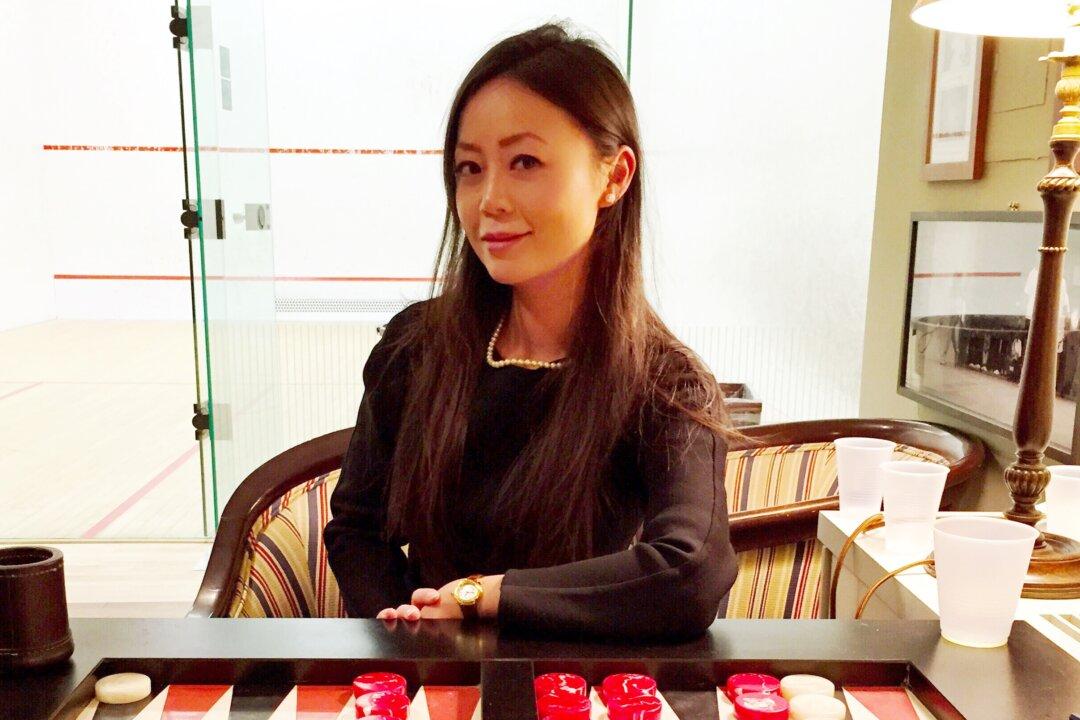CAE executive director Richard Kessler and CAE director of public engagement Kira Streets spoke on the past and present challenges of retaining and returning arts education to the classroom. Their organization works to advocate for reform on a legislative level as well as on a grassroots level.
The importance of arts in a child’s enrichment cannot be denied. Almost all of the global economy depends on industries involving art—music, theater, design, and a plethora of other fields. “Arts education allows a child to pursue a career in the cultural landscape that New York City is known for,” said Laura Ludwig, a co-chair on the club’s Arts and Landmarks Committee. Furthermore, immersion in the arts nurtures creativity and problem-solving skills that are useful in any industry.
The Journey of Arts Funding
The prominence of arts in the classroom began to fade in the mid 1970s, when major cuts to school budgets began to translate into the firing of arts teachers en masse, according to Kessler. “Then the assumption was that when the money came back, so would the teachers,” he said. But that never happened. Arts teachers became the first ones to go whenever budget constraints demanded cuts.
Then, in 1999, mayor Rudy Giuliani created Project ARTS funding that allotted over $60 to be spent per child in 830 schools. The money was to be used for hiring art teachers, buying art supplies, or to secure the services of outside cultural institutions. “It was a tremendous engine, as well a safety net for arts education,” Kessler said.
But in 2007, Mayor Michael Bloomberg and schools Chancellor Joel Klein decided that principals should be able to spend the money as they see fit. The arts spending requirement under Project ARTS was lifted.
No Child Left Behind Culture
Former President George W. Bush’s No Child Left Behind policy set schools across the nation on a binge of investing in English reading and math. In some school systems, standardized test success plays a key role in a determining how much funding a school receives. So given budget constraints, many principals opt to fund reading and math instead of arts.
Standardized testing or not, the uncoupling of arts with other subject areas in primary school did arts education a disservice. Though art is a universal medium of learning, most classroom teachers nowadays have little to no training in art education. Kessler recalled that decades ago, the same teacher who taught language and math would also teach music and dance. His point elicited nods and murmurs from some older members in the crowd.
Current Action
While the economic reality of today does arts education no favors, small steps are being made to bolster support for it. Thirty members of the City Council are backing resolution 837 to require that the money allotted under Project ARTS be again dedicated to fund art programs. Parents are being trained to visit principals armed with postcards and talking points, and the CAE just wrapped up a letter-writing campaign to the Mayor.
They are also pressuring Albany to enforce compliance with state education requirements. Many schools in the city that are understaffed in the arts department are in violation of state code, which require that students in grades 1-3 spend 20 percent of their total class time engaged in art. For fourth to sixth graders, that requirement is 10 percent and middle- and high schoolers must have one year of arts education. The State defines art in four groups: visual arts, music, dance, and theater.
It’s not hard to get parents on board with the campaign, said Streets. “It’s completely intuitive,” she said. “Parents know inherently that children should be expressing themselves during the day and be having fun. It isn’t easy time but a worthwhile educational experience, only using another part of the brain.”
Parent guides are available at the CAE website in nine languages. (www.cae-nyc.org)